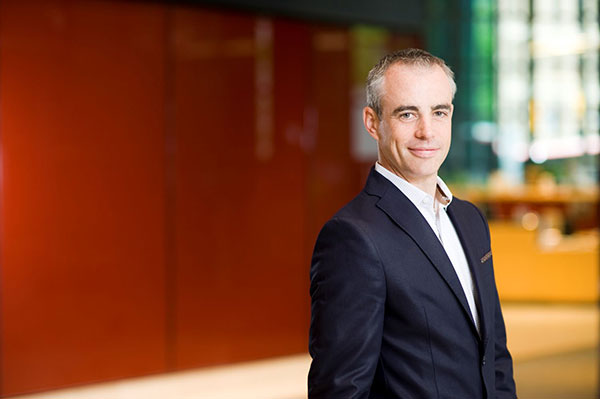While most businesses are being forced to re-think their short and long-term strategies in light of the current global crisis, it isn’t all doom and gloom. Some are using the situation as an opportunity to double down on what’s core to their business success.
Many SaaS companies have been able to lean on their agile business and revenue models to continue moving forward. And though working environments have altered, and clients and prospects may have different needs and priorities right now, that doesn’t mean SaaS companies have stopped trying to grow.
We recently chatted with representatives from OMERS Ventures and the Business Development Bank of Canada (BDC) about how companies in their portfolios—including Stax Bill—are navigating through the pandemic landscape.
Planning and reassessing for future SaaS growth
Eugene Lee is on the investment team for OMERS Ventures—the venture capital investment arm of OMERS, which is one of the largest defined benefit pension plans in Canada with $109B in net assets.
With more than 15 years of operating experience in companies ranging from seed to public and everything in between, Lee focuses on identifying investment opportunities in workplace technology and workplace SaaS—tools that make us more effective and efficient in the workplace.
SaaS businesses in this space have recently been thrust into the limelight as companies continue to develop their work-from-home infrastructure and settle deeper into a new normal for the foreseeable future.
So how are businesses in Lee’s portfolio dealing with the pandemic?
They’re definitely taking a gentler hit than companies in other industries, he says. But everyone has their challenges right now.
“It’s really forced our portfolio and companies that we’ve been talking with to think about how work in general has changed and how we use technology,” he says. “The other theme I’m hearing when talking to companies is that they’re subscribing to this mantra of, ‘we worry about our people first—meaning our employees—and then the business’. It’s not that business is secondary, but people have become a very large component. And people are just as important as the product to building a company.”
Business leaders are navigating the challenge of ensuring their workforce is supported and adapting well to this change. They’re also looking to find ways to keep their teams motivated and to maintain a semblance of the culture they had before.
And then there’s adaptation of the business side.
“A lot of the companies have obviously done scenario planning to think about how they can influence their main levers and drivers of the business,” says Lee. “That’s followed up by, ‘how do we reduce our expenses, and how do we reduce our cash burn and extend our runway, because we don’t know when this is going to end’.”
Common practice is to create several new goals or ‘cases’ for a business. Based on an original budget and performing updated forecasting, companies can then work on predicting various new achievable outcomes.

“Cases provide guideposts for teams to execute against,” says Lee. “but you have to continually reassess them as you get new information. As you sell new deals or new deals potentially drop off, or as products get launched, you reassess those plans and iterate against them to figure out what works.”
Founders and companies succeed by adapting quickly, he says. They need to hone in on their product, their customers, their metrics, and what’s working so they can understand the drivers of their business and hopefully keep on growing.
Adding value to SaaS through investment
So how can investors provide value to their portfolio companies during times of crisis?
“In terms of walking the talk, it’s easier to be an investor during good times,” says Lee. “but this is where you earn your stripes and really dive in to be there for your portfolio. And that’s what we’re trying to do.”
OMERS is helping its portfolio with all aspects, from financial, cash, and metric analysis, as well as reviewing strategic scenarios, he says. It also has an operational team that focuses on talent, communications, and growth, which it’s deploying throughout its portfolio.
Another focus for OMERS is to continue connecting companies within its portfolio and enabling them to provide support to one another.
“We firmly believe that when we invest in a company, we’re all one team,” says Lee. “That extends out to the portfolio.”
In line with this objective to connect businesses for shared learning and experience, Lee connected us with another SaaS company he feels is really standing strong during these uncertain times: Klue.
Forging a path through the crisis
Klue is a competitive enablement platform that delivers external and internal intelligence to its clients to help them win, defend, and expand business.

CEO Jason Smith has spent a decade and a half working in B2B enterprise SaaS. Klue is his fifth startup, and the business recently had its biggest quarter ever in Q1 2020. Then came the crisis.
“Like most companies, we’ve absorbed the shock and have a path forward,” says Smith.
As a SaaS company, transitioning to a remote working environment was a seamless process.
With all production code and servers in the cloud, we can work from wherever we want, scale up or down to meet demand as much as we want, and generally move as fast as we want,” he says.
Smith says the company’s website visits and MQL’s are nearly back to pre-Covid levels, previously frozen prospects are re-engaging, it’s seeing leads from larger companies, and churn has been minimal.
“If anything, we’ve seen an uptick in expansion across our client base, particularly across larger clients,” he says.
Still, the Klue team expects to see some Covid-related impact moving forward, with slower sales cycles and reduced spend (deal size).
For now, a huge part of the Klue team’s focus is on bringing value to its clients by feeding them intel on how their competitors are reacting to the crisis, and by helping their sales teams—some of which have recently lost as much as 30% of their pipelines—win more head-to-head competitive deals.
Klue is also helping its clients’ customer success teams with retention and expansion during this time by extending its service to them at no additional charge.
“We’re a small company so we can’t do a lot,” says Smith, “but genuinely finding ways to give no-strings-attached value to your clients when they need it most fosters loyalty in a way that normal times can’t. Everyone should be doing whatever they can to help their clients survive and thrive during the crisis.”
The SaaS growth mindset persists, even in a crisis
So what plans is Klue putting in place to come out of this situation strong and continue on its growth path?
It has kicked off its efforts to raise Series A funding…yes, in the middle of a crisis.
“Pretty much everyone told me not to,” says Smith. “But what I’ve learned from previous downturns is that it can be a time of enormous opportunity. For better or worse, this crisis will fade to the background and we’ll eventually be seized by the growth mindset again. This time around I want to be prudently aggressive, to jump on opportunities. And to do that, we need financial reserves.”
With the right metrics and business trajectory already in place, according to Smith, the plan for Klue is to raise more capital, triple down on what’s working, experiment in new areas, and create a people-product-partnership fly-wheel to come out of the pandemic in a position of strength.
SaaS businesses are bracing for what’s yet to come
While Klue has decided to forge ahead with raising new capital, other SaaS companies that were just about to start a fund raise may see challenges and delays on this front, says Robert Shaw, Director of Growth and Transition Capital at BDC.
As a result of the pandemic, many SaaS businesses will need to adjust their operational expense structures, he says.

Shaw works with executives and companies from a variety of different industries—including SaaS—to discuss their growth plans and identify areas where BDC Capital can help with providing long term capital.
“Generally speaking, we get involved with companies that are looking at executing a leveraged management buyout, acquisition of another company, or need a layer of capital to accelerate growth,” he says.
BDC, along with its subsidiary BDC Capital, offer a full spectrum of financing and advisory services to growing businesses, and it has more than $30B in total assets.
We asked Shaw to describe how SaaS businesses in BDC Capital’s portfolio are managing and refocusing during the pandemic, especially in terms of their forecasting for this year.
“It has been a challenge for entrepreneurs and CFO’s to get a handle on what the impact of Covid will be on their sales,” he says.
The feedback Shaw is receiving aligns somewhat with Klue’s experience. SaaS businesses aren’t necessarily feeling an acute, real-time impact as a result of the pandemic, but they are contemplating what’s yet to come in upcoming quarters—when the impacts reach their target market and customer base.
For the most part, I have seen adjusted forecasts on revenue versus plan between 20-40%, and for those companies that have significant accounts receivable we are seeing a delay in payment which is impacting cash flow,” says Shaw.
He notes that most SaaS companies are cutting back on their marketing spend—though marginally to avoid hurting themselves during post-Covid recovery—and most, if not all, have put a freeze on new hiring until more certainty returns to the economy.
But in general, these companies have been able to ease into new forms of business-as-usual quite seamlessly.
The advantages of operating with a SaaS model
“What I have seen is that SaaS model is actually very elastic,” says Shaw. “What I mean by this is that 100% of the workforce can work remotely, SaaS companies usually have hundreds if not thousands of customers, and payments in most cases are monthly/quarterly and come out of operational budgets and not large one-time perpetual license arrangements classified as large capital expenditures. The hosting model also gives SaaS companies the ability to turn off the service if payment isn’t rendered, which limits their exposure to non-payers.”
An important step many executive teams are taking right now is to measure the health of their existing client base, says Shaw. This will help to ensure they aren’t caught off guard by excessive churn rates.
“They are implementing Covid strategies that in some cases allow for an extra month of the service for free, allowing companies that are doing Covid-related activities access to the platform for free, or making the platform available to companies deemed as ‘essential services’. Their hope is that they will garner some goodwill through the process and see these companies convert to paying customers on renewal.”
And again, Shaw iterates the importance companies are placing on their own employees and how they can ensure a healthy and productive remote working environment.
“Entire companies working remotely has changed the way managers interact with their reports. Some have implemented new Key Performance Indicators (KPIs) while others are managing with regular digital check ups through Slack, Zoom MS Teams, etc.,” he says. “It really depends on the size of the company.”
Solutions for leading a SaaS business through crisis
Shaw and his team at BDC Capital are working with their portfolio companies through this time and talking to them about their Plan A through Plan C strategies, as well as what measures need to be taken if business continues to trend worse.
He notes that even now, for SaaS businesses in the start-up or started-up phase that are trying to push ahead, venture capital financing, venture debt, or mezzanine financing are all great options worth pursuing. The type of capital will depend on the stage the company is at and what capital structures already exist on the balance sheet.
There have been a lot of comparison between what’s happening now in the economy and what happened during the 2008 recession. But the two situations are quite different, says Shaw. During the 2008 financial crisis, the U.S. sub-prime mortgage debacle impacted bank balance sheets causing them to retrench, he says. They weren’t lending and they didn’t have the capital availability they do today.
Flash forward to now and the pandemic is global,” says Shaw. “There is no country unaffected by the crisis; however, governments and banks are in a strong financial position and have injected sufficient liquidity into the market.”
The journey forward for SaaS
While SaaS businesses are experiencing their own challenges right now—just like companies in every other sector—they have innate attributes that are helping them persist and even advance as the economy continues in flux: namely, recurring revenue.
By taking care of their core teams, by continually reassessing their expenses, processes, and growth strategies as new information surfaces, and by strongly supporting the ongoing success of their clients, SaaS businesses can remain focused on the journey forward.
“There’s no playbook for this, so we’re trying to learn best practices in real time from other leaders in the tech and SaaS community,” says Tyler Eyamie, Stax Bill CEO. “As a business, during this time we’ve really moved from growth mode into customer success mode.”
While Stax Bill has taken strong steps to lengthen its runway and ensure its longevity, the company attitude and mindset is about ensuring its clients are well taken care. This culture shift is not only helping clients continue on their own growth paths, but also it’s ultimately helping to forge stronger client relationships that will benefit Stax Bill’s growth into the future.
We’ve always seen the journey of any company that decides to work with us as a ten year plus journey,” says Eyamie. “So right now, if we need to take a bit of a short-term hit to help out customers who’ll be with us for the next decade, it’s a no brainer.”
SaaS businesses that are well-positioned with experienced support networks and strong financial backing can approach the future with a much higher degree of calculated confidence.
Having strong partnerships with organizations like OMERS and BDC Capital is also giving Stax Bill and other growing SaaS companies within their portfolios an added advantage to ensure continued growth in the years ahead.








